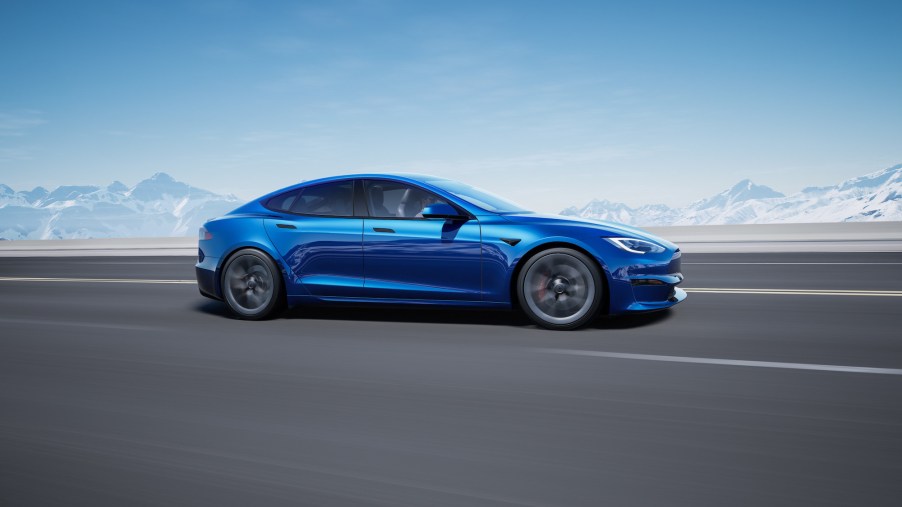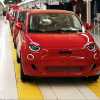
What Is Tesla’s Plaid Mode?
Tesla looked to make upgrades and add new features to its Model S and Model X EVs. And that has come through Plaid Mode, offering a new level of speed. Plus, structural tweaks to components like the steering wheel and control stalks drastically change the driving experience. All of these changes are impressive, but how many are they useful for most drivers?
What does Plaid mode add to Tesla EVs?
Tesla made some significant changes to the Model S’s and Model X’s capabilities by adding Plaid Mode to their lists of features.
Plaid Mode-enabled cars have batteries and three electric motors that can create up to 1,020 hp and take the car from 0 to 60 mph in a mere two seconds, CNN reports. This addition gives these electric vehicles faster acceleration than even some big-name supercars like Lamborghini, Ferrari, and Bugatti. Tesla models without Plaid Mode can get up to speed in a paltry 2.5 seconds in Ludicrous Mode. (Both modes get their names from the Star Wars satire Spaceballs.) Plaid Mode also provides about 390 miles of driving range on a full charge.
For even more extreme speed, there’s also Plaid+, which accelerates even faster. But the EV maker doesn’t say exactly how fast. However, Tesla‘s website claims a car with Plaid+ can drive over 500 miles if fully charged.
If you want to experience Plaid Mode, be prepared to cough up a hefty sum. Plaid Mode editions of the Model S and X run $120,000, while the Plaid+ vehicles will set you back $140,000.
Plaid Mode is only 1 of several new features on the Model S
That isn’t the only change Tesla is making to the new Model S. Say goodbye to the traditional steering wheel. The EV maker has replaced it with a U-shaped device that looks like an airplane yoke. It also bears some similarities to the one in the new Chevy Corvette, CNN notes.
Though the steering wheel’s new shape might seem like a design choice, there’s a practical reason. The top rim is open so that drivers can better see the screen displaying the speedometer and renderings of nearby vehicles.
But perhaps the steering wheel’s biggest changes are its lack of a gear shifter and turn signal stalk. The new Model S automatically makes those decisions “based on what obstacles it sees,” CEO Elon Musk explained on Twitter. He added that the driver can make those selections manually on the touchscreen to override the car’s semiautonomous driving.
Oh, and that touchscreen is a huge 17-inch high-resolution one installed horizontally in the dashboard’s center.
Are these upgrades worth the extra expense?
As impressive as these design choices are on a technical level, there are fair questions about how functional they are for most people. The price is obviously prohibitive for the general public, but the potential problems go deeper than that.
Zipping from 0 to 60 mph in a flash is cool, but it won’t help when you’re sitting in bumper-to-bumper traffic. There are few situations where the average Tesla owner could hit full throttle and use that speed. Accelerating that quickly also would also force 1.4 times the amount of gravity on the person in the front seat, which would probably get old if you felt it every time you hit the pedal.
Plus, the reshaped steering square might not even be legal. Either way, it could make maneuvers like parallel parking or three-point turns awkward to pull off. Tesla’s automated elements are well-publicized, but not every driver is willing to relinquish control. And it’s not like Tesla vehicles are immune to glitches that can result in severe consequences.
Tesla’s new features could be fun toys. But it’s hard to imagine them becoming staples in most drivers’ lives — at least for now.


